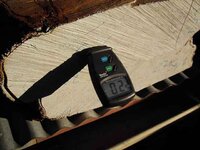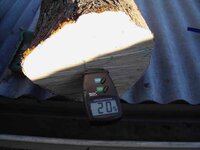Hi Munsterlander,
Even tough you are making a simple question, the answer is not that simple!
There are an enormous number of factors that can make the wood crack in small pieces like the pen barrels. There is green, green and wet, dry and wet, semi-dry, dry and old dry.
The moisture meter is an excellent tool to have, to keep and eye on what the timbers are at but accurate readings are only possible with instruments costing thousands of dollars. Don't panic, I've got a digital $50 one and is good enough for me to get the results I need. The "ideal" moisture content level, varies from timber to timber, generally anything around 12% is considered dry, this is indeed the average percentage the timbers come out at from the large industrial kilns.
I have turned successfully timbers at 20% of MC that didn't crack or move, I have had problems with timbers turned, reading 3% MC so, this is the difficult part!
I would try to keep this as simple as I can so, consider 12%MC as your target for dry wood, anything higher like 12% to 20% MC as semi-dry, after that is either green or wet, with 38% been a fresh green log, if soaked wet the meter will go around 40%MC.
Particularly with pen making, many barrels are destroyed with cracks (small or large), due to extreme hit from sanding or polishing/buffing, this become more an issue, as the timber reads a higher MC content so as you see, there is no such thing as a unique reason why your barrels are getting cracked but indeed, a serious of factors that can contribute for such results.
I'm sorry is this doesn't help you but, that's my simpler version of a very complicated and technical issue!
Cheers
George


